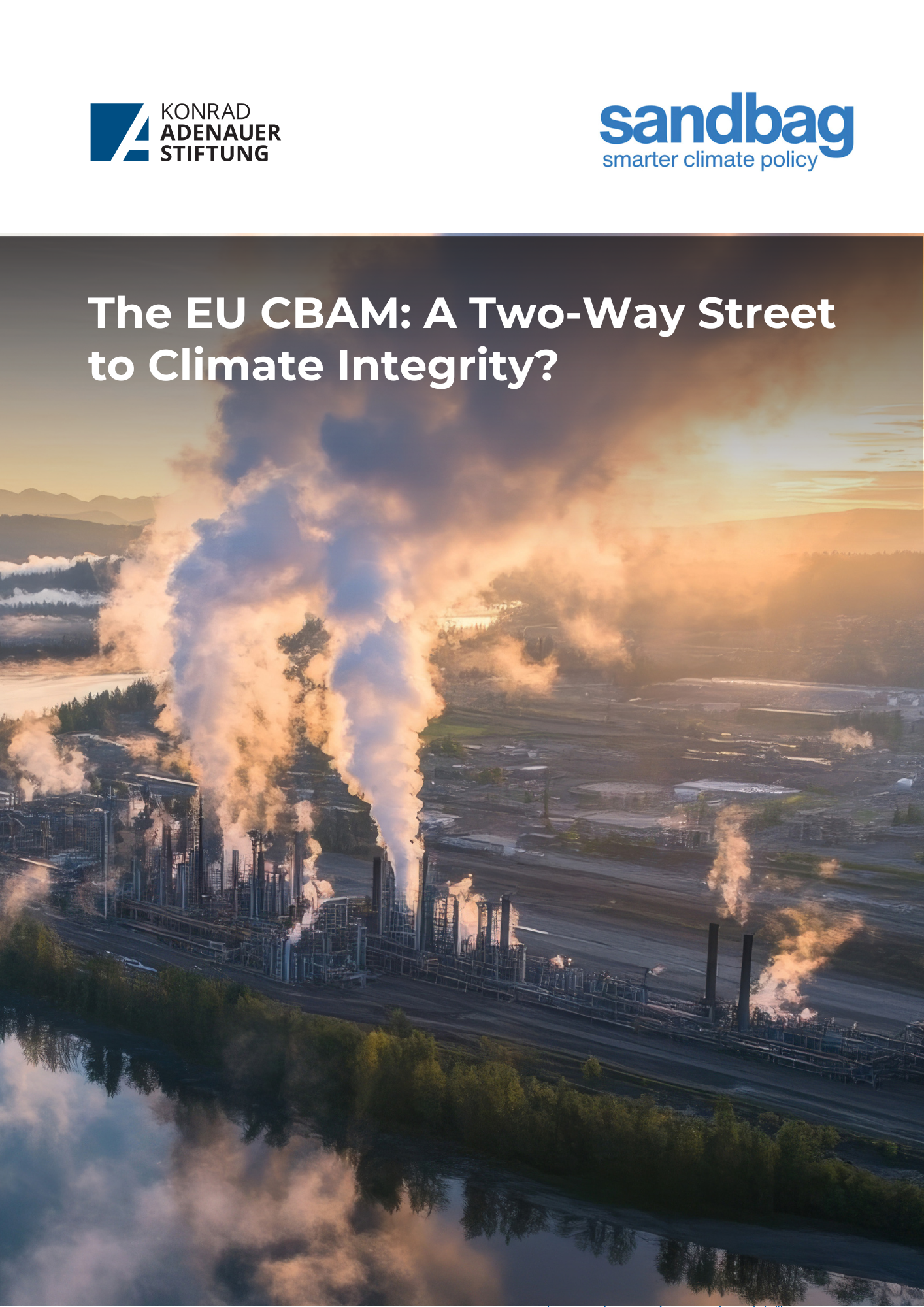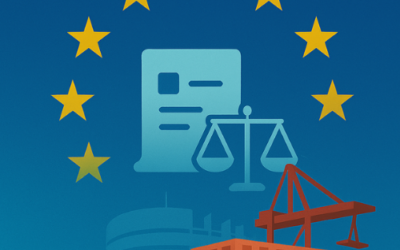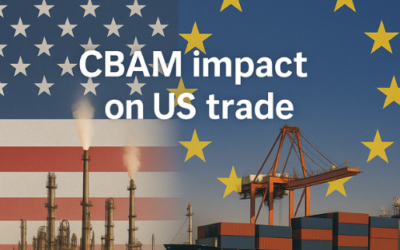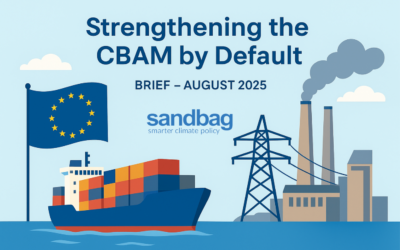The Carbon Border Adjustment Mechanism (CBAM) is an EU climate policy, rather than an international trade policy. It aims to replace the current system of free allocation of emission allowances to EU-based manufacturers under the EU carbon market, which is a major obstacle to industrial decarbonisation in Europe.
Replacing free allocation is therefore an essential piece of the EU’s increased climate ambition. The CBAM could enable the removal of up to 432 million free allowances per year, worth €35 billion no longer given to EU factories.

About the report
Sandbag’s report, supported by the Konrad-Adenauer-Stiftung, explores how the EU’s Carbon Border Adjustment Mechanism (CBAM) and the phaseout of free allocation will affect third country exporters — and the implications for climate policy and global trade. The combined implementation of the CBAM and phaseout of free allocation will increase production costs for both EU and third country producers, which will push up the selling price of CBAM goods in EU markets. In addition, third country producers are able to minimise CBAM costs by strategically selecting inputs and processes so as to export to Europe goods with lower declared emission intensity (resource shuffling). Some exporters might therefore increase profit on their product sales.
If third countries keep trading with the EU “as usual”, the CBAM in its current scope could collect €11.3 billion in fees annually. CBAM fees can be reduced to €7.3 billion (worldwide) if third country producers do resource shuffling, and further down to €7.0 billion if their national authorities set up carbon pricing. The real cost of the CBAM to third countries should however take into account extra revenues expected from the sale of goods into Europe at higher prices. Once these revenues are factored in, the net cost of the CBAM is reduced to €5.0 billion across all countries under business-as-usual conditions and in the scheme’s current coverage. This goes down to €995 million if exporters do resource shuffling, and to only €715 million (about 0.07% of the value of imports) if all trade partners implemented a €50 carbon price.
Resource shuffling is a way of minimising CBAM costs and sometimes profiting from the scheme. However, such practice does not reduce emissions and could hinder the EU’s efforts in phasing out free allocation in the EU ETS. This may press the EU to change some of the rules to reduce the gains achievable through resource shuffling.
It is therefore not preferable for EU trade partners to build long-term strategies based on resource shuffling. In contrast, implementing carbon pricing makes it possible for third countries to dramatically reduce CBAM costs- and even benefit from the mechanism– while creating real emission reduction incentives. It also makes third country producers indifferent.
In the news
- Carbon Pulse, 25 August 2025: EU CBAM seen enabling €35-bln phaseout of free EU carbon permits – report
- Montel News, 25 August 2025: Extended CBAM “could remove 430m free allowances a year”
- Financial Times, 25 August 2025: Raking it in — The EU’s carbon border tax could earn the bloc up to €11.3bn annually if other countries keep trading with the EU “as usual”, according to Sandbag’s latest report.
- Politico Pro, 25 August 2025: Pressure grows to shield EU car exports from Trump tariffs
- Les Échos, 31 August 2025: Taxe carbone aux frontières : les industriels européens privés de 35 milliards sur dix ans
Related publications
Sandbag’s Response to the CBAM Calls for Evidence
Sandbag has submitted responses to the EU’s CBAM calls for evidence, addressing emissions reporting, adjustment for free allocation, and carbon prices paid abroad. We highlight risks such as loopholes and unequal treatment, and propose practical solutions to strengthen CBAM’s effectiveness and fairness.
CBAM impact on US trade: an analysis
Sandbag’s September 2025 research note explores the impact of the EU’s CBAM on US exports. It finds that even with expanded scope, the financial impact remains marginal — and US carbon pricing could turn net costs negative.
Strengthening the CBAM — by default
Sandbag’s August 2025 brief calls for systemic default values to close CBAM loopholes—addressing scrap and cement circumvention, electricity imports, and indirect emissions.



